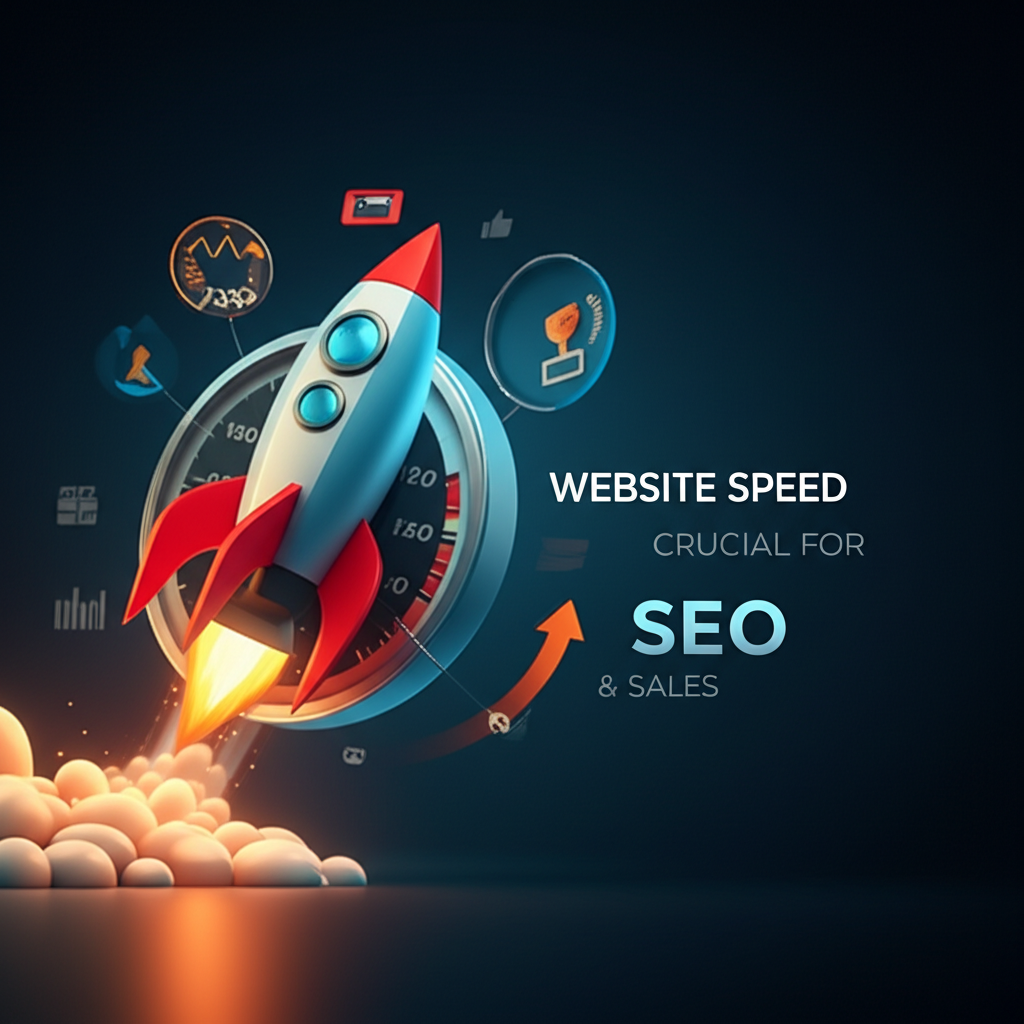- Why Website Speed Matters for SEO
- Website Speed as a Ranking Factor
- The Impact of Slow Loading Times on SEO
- Website Speed Optimization: Boosting Sales and Conversions
- The Link Between Website Speed and Conversion Rates
- Enhancing User Experience with Improved Website Speed
- How to Improve Your Website Speed
- Website Speed: A Continuous Effort
Website Speed: Crucial for SEO & Sales
Website speed plays a vital role in both your search engine optimization (SEO) efforts and, ultimately, your sales. In today’s fast-paced digital world, users expect instant gratification. A slow-loading website can lead to frustration, abandoned shopping carts, and a damaged reputation, impacting both your search rankings and your bottom line.
Why Website Speed Matters for SEO

Google and other search engines prioritize user experience. A key factor in user experience is how quickly a website loads. Slow loading times contribute to a poor user experience, signaling to search engines that your site isn’t providing optimal value. This can negatively impact your search ranking, making it harder for potential customers to find you.
Website Speed as a Ranking Factor
Website speed has been a confirmed ranking factor for desktop searches for years. More recently, Google rolled out mobile-first indexing, making mobile site speed even more critical. This means Google predominantly uses the mobile version of your website for indexing and ranking. Therefore, optimizing website speed for mobile devices is no longer optional; it’s a necessity.
The Impact of Slow Loading Times on SEO
Slow loading times contribute to a higher bounce rate, which is the percentage of visitors who leave your site after viewing only one page. A high bounce rate signals to search engines that users aren’t finding what they’re looking for, further impacting your search ranking. Furthermore, slow speed can also affect crawl depth, limiting the number of pages search engine bots can access and index on your site.
Website Speed Optimization: Boosting Sales and Conversions
Beyond SEO, website speed directly influences your sales and conversions. When a website takes too long to load, potential customers are likely to abandon it before even seeing your products or services. This leads to lost sales opportunities and decreased revenue.
The Link Between Website Speed and Conversion Rates
Studies have shown a strong correlation between website speed and conversion rates. Even a one-second delay in page load time can result in a significant drop in conversions. For e-commerce businesses, this can mean the difference between a successful sale and a lost customer. Imagine a potential customer adding items to their cart only to abandon it due to slow checkout process – a frustrating experience that can easily be avoided with proper website speed optimization.
Enhancing User Experience with Improved Website Speed
Faster website speed translates to a smoother, more enjoyable user experience. When users can navigate your site quickly and easily, they’re more likely to engage with your content, browse your products, and ultimately make a purchase. A positive user experience builds trust and encourages repeat visits, fostering customer loyalty and driving long-term growth.
How to Improve Your Website Speed
There are numerous ways to optimize your website speed, ranging from simple tweaks to more complex technical implementations. Here are some key strategies to consider:
Optimize Images: Compress images without sacrificing quality to reduce file sizes and improve loading times. Utilize appropriate image formats like WebP for better compression and quality.
Leverage Browser Caching: Enable browser caching to store static resources like images and CSS files on the user’s device, so they don’t have to be downloaded every time they visit your site.
Minify CSS and JavaScript: Remove unnecessary characters and whitespace from your code to reduce file sizes.
Use a Content Delivery Network (CDN): A CDN distributes your website’s content across multiple servers around the world, allowing users to access it from the server closest to their location, reducing latency and improving loading times.
Choose a High-Performance Hosting Provider: Your hosting provider plays a crucial role in your website’s speed. Opt for a reliable provider with fast servers and sufficient resources.
Implement Mobile-First Design: Design your website with mobile users in mind from the beginning. This ensures a seamless experience for mobile visitors, crucial for both user experience and SEO.
* Regularly Monitor and Analyze Your Website Speed: Utilize tools like Google PageSpeed Insights and GTmetrix to identify areas for improvement and track your progress.
Website Speed: A Continuous Effort
Optimizing website speed is not a one-time task; it’s an ongoing process. Regularly monitor your website’s performance, implement necessary improvements, and stay up-to-date with the latest best practices to ensure your site remains fast, efficient, and optimized for both search engines and users. By prioritizing website speed, you’re investing in a better user experience, improved SEO, and ultimately, increased sales and business growth.











Leave a Reply